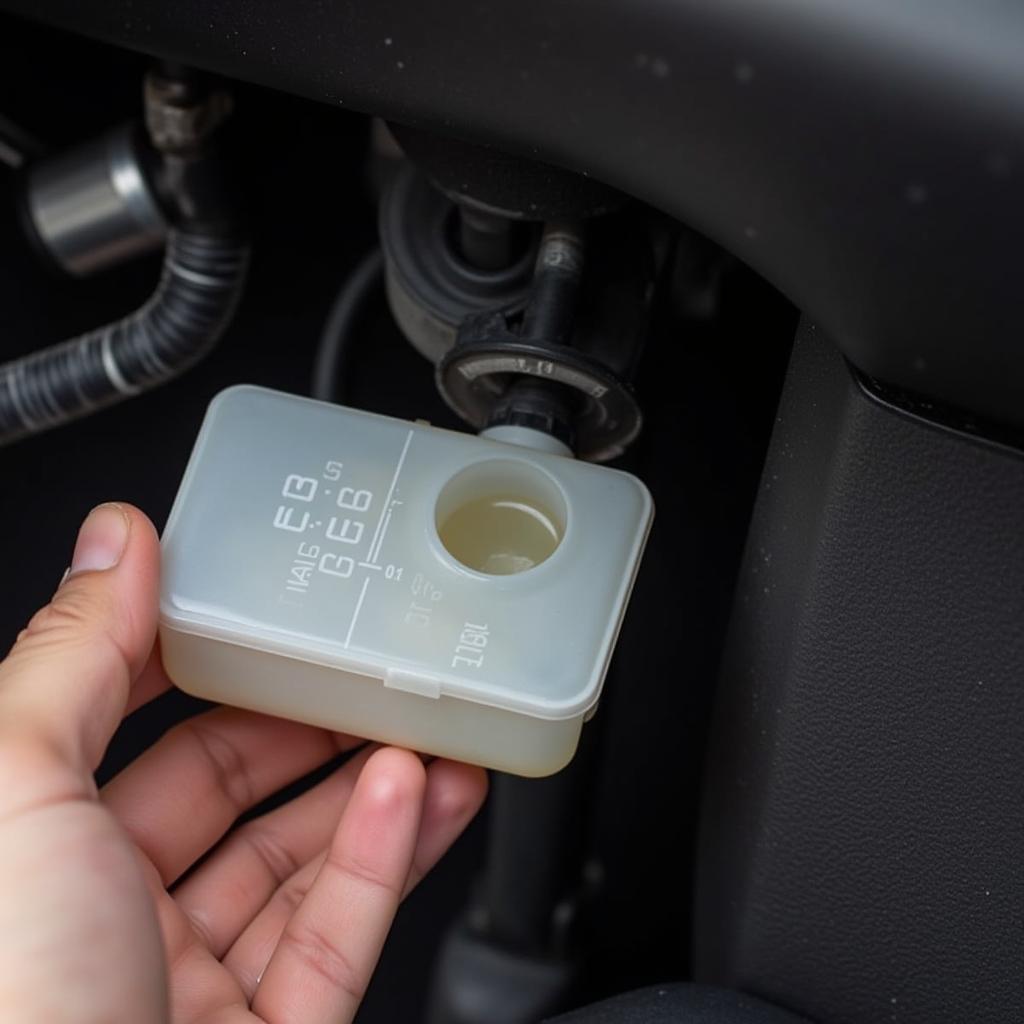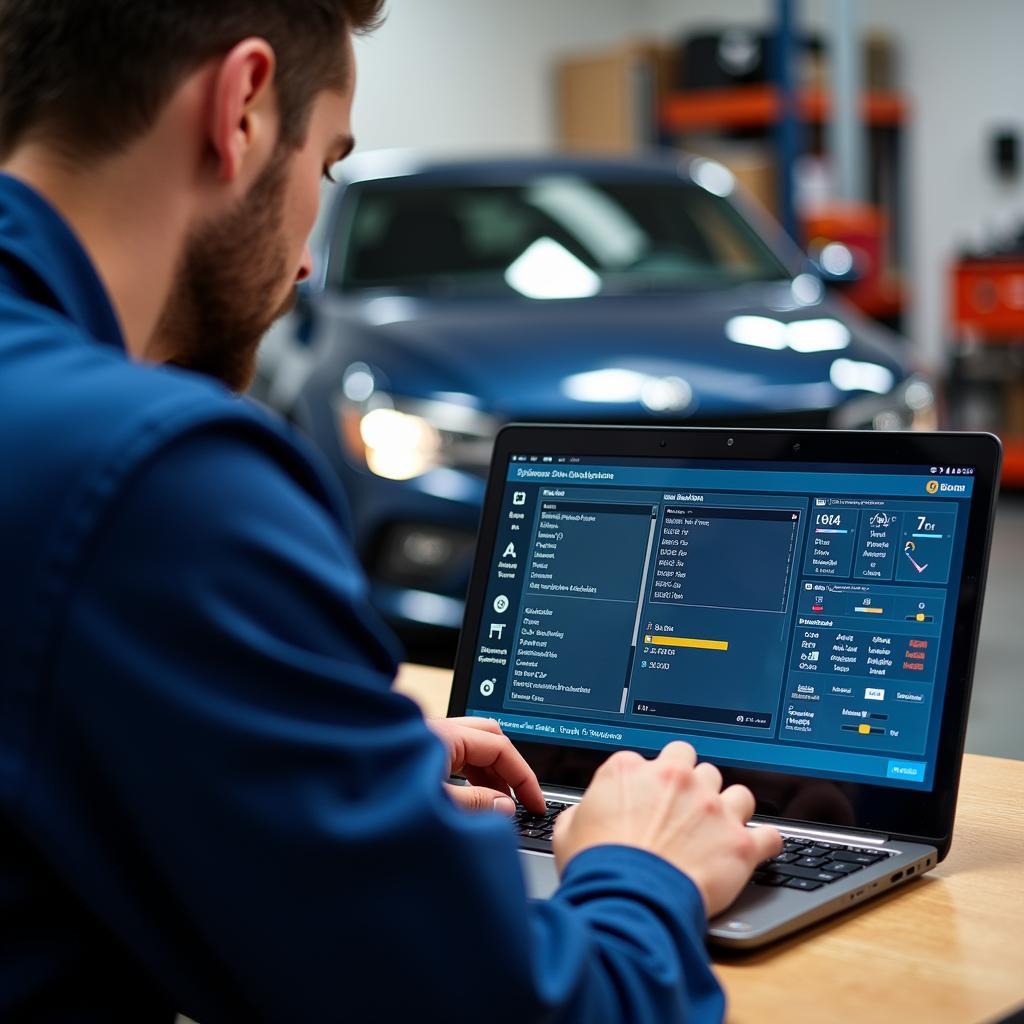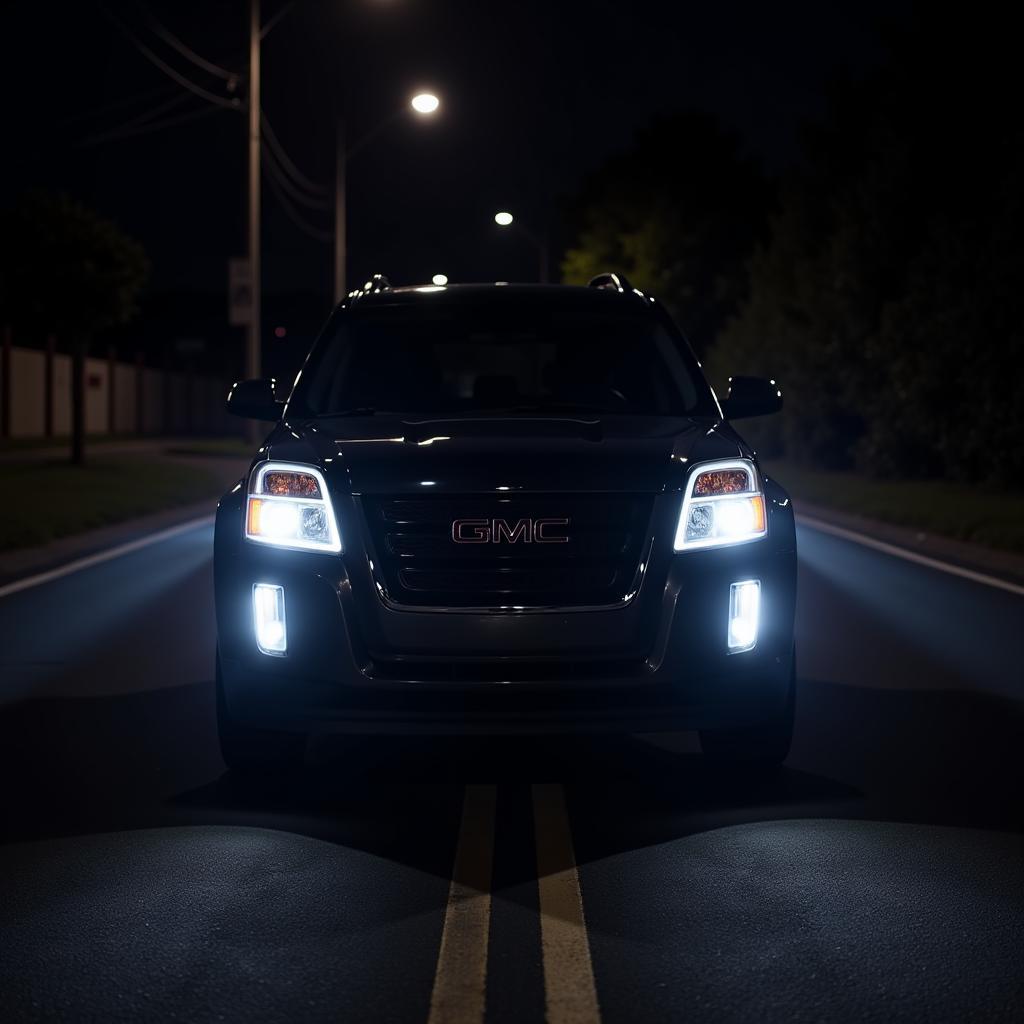The automatic brake warning light on your dashboard is a critical safety feature, designed to alert you to potential problems with your vehicle’s braking system. Ignoring this warning light could compromise your ability to stop safely, putting you and others at risk. This comprehensive guide delves into the common causes of an illuminated automatic brake warning light and provides insights on troubleshooting and resolution.
Understanding Your Car’s Braking System
Modern vehicles are equipped with sophisticated braking systems that extend beyond traditional hydraulics. Understanding the basic components can help you grasp why the automatic brake warning light might illuminate.
- Hydraulic System: This system uses brake fluid to transmit force from the brake pedal to the wheels, enabling your car to stop.
- Anti-lock Braking System (ABS): The ABS prevents wheel lockup during hard braking, helping you maintain steering control.
- Electronic Brake-force Distribution (EBD): This system optimizes braking force to each wheel based on factors like vehicle load and road conditions.
- Electronic Stability Control (ESC): ESC helps prevent skidding and loss of control by selectively applying brakes to individual wheels.
- Advanced Driver-Assistance Systems (ADAS): Features like automatic emergency braking rely on sensors and software to detect potential collisions and apply the brakes if necessary.
Common Causes of an Automatic Brake Warning Light
The automatic brake warning light can be triggered by various issues, ranging from simple maintenance needs to more complex system malfunctions. Here are some of the most prevalent causes:
- Worn Brake Pads: Brake pads are designed to wear down over time. When they reach a certain thickness, a sensor triggers the warning light, indicating it’s time for a replacement.
- Low Brake Fluid: A leak or significant decrease in brake fluid level can hinder the hydraulic system’s ability to function correctly, activating the warning light.
- Faulty ABS Sensors: These sensors monitor wheel speed and relay information to the ABS control module. If a sensor malfunctions or gets obstructed by debris, it can disrupt the ABS system and illuminate the warning light.
- Malfunctioning ABS Module: The ABS module is the brain of the anti-lock braking system. A faulty module can lead to erratic behavior, including an illuminated warning light.
- Brake Light Switch Issue: The brake light switch activates your brake lights when you press the pedal. A malfunctioning switch can sometimes trigger the brake warning light as well.
- Electrical Problems: Wiring issues, corroded connections, or a faulty fuse within the braking system’s electrical circuits can also cause the warning light to come on.
Troubleshooting the Automatic Brake Warning Light
 Checking Brake Fluid Level
Checking Brake Fluid Level
Before you panic, there are several steps you can take to troubleshoot the automatic brake warning light yourself:
-
Check Your Brake Fluid: Locate the brake fluid reservoir under the hood (refer to your owner’s manual) and check the fluid level. If it’s below the minimum mark, add the recommended brake fluid type. However, be cautious – a sudden drop in fluid level could indicate a leak, requiring immediate professional attention.
-
Inspect Your Brake Lights: Have someone press the brake pedal while you check if all brake lights are functioning correctly. If not, a faulty brake light switch could be the culprit.
-
Listen for Unusual Noises: Pay attention to any grinding, squealing, or clicking sounds when applying the brakes. These noises often indicate worn brake pads or other issues requiring mechanic inspection.
When to Seek Professional Help
While some causes of an illuminated automatic brake warning light might be easily addressed, others demand professional expertise. If your troubleshooting efforts are unsuccessful or you suspect a more serious issue, it’s crucial to take your car to a qualified mechanic.
Here are some instances where professional help is essential:
- Persistent Warning Light: If the warning light remains on after checking the brake fluid and brake lights, further diagnosis is necessary.
- Soft or Spongy Brake Pedal: A brake pedal that feels soft or sinks to the floor with minimal resistance indicates a potentially dangerous issue with the hydraulic system.
- Pulling to One Side When Braking: This could be a sign of uneven brake pad wear, a stuck caliper, or a problem with the hydraulic system, requiring immediate attention.
- ABS Light Illuminated Along with Brake Warning Light: This often points to a more complex issue within the ABS system, requiring specialized diagnostic tools.
Remote Diagnostics and Software Solutions: A Modern Approach to Brake Issues
 Mechanic Performing Remote Car Diagnostics
Mechanic Performing Remote Car Diagnostics
In today’s technologically advanced world, remote diagnostics and software solutions are playing an increasingly vital role in car repair, including addressing brake system problems.
-
Remote Diagnostics: Some manufacturers and specialized service providers can remotely connect to your car’s onboard computer system to retrieve diagnostic information, such as fault codes. This can help identify the root cause of the brake warning light without the need for an immediate physical inspection.
-
Software Updates and Reprogramming: Modern braking systems heavily rely on software. Occasionally, software glitches or outdated versions can cause warning lights to illuminate. In these cases, a mechanic with the appropriate software tools can perform updates or reprogramming to rectify the issue.
Preventing Future Brake Problems
Proactive maintenance is key to preventing future brake problems and ensuring your safety on the road. Here are some essential tips:
- Regular Brake Inspections: Have your brakes inspected by a qualified mechanic at least once a year or as recommended in your owner’s manual.
- Timely Brake Pad Replacement: Don’t wait for the warning light to come on. Replace worn brake pads promptly to maintain optimal braking performance.
- Quality Brake Fluid: Use the type and grade of brake fluid specified in your car’s owner’s manual and have it flushed and replaced as recommended.
- Pay Attention to Changes in Braking: Be alert to any changes in brake pedal feel, unusual noises, or vibrations. Address these issues promptly to prevent more serious problems.
FAQs about Automatic Brake Warning Lights
Q: Can I still drive my car with the automatic brake warning light on?
A: While you might be able to drive a short distance, it’s strongly advised not to. Driving with a potential brake problem significantly increases the risk of an accident.
Q: How much does it cost to fix an automatic brake warning light?
A: The cost varies greatly depending on the underlying cause. A simple brake pad replacement is much less expensive than a faulty ABS module, for instance.
Q: Is it safe to add brake fluid myself?
A: Yes, you can add brake fluid yourself, but ensure you use the correct type and follow the instructions in your owner’s manual. However, if you notice a frequent need to top up the fluid, it indicates a leak that requires professional attention.
Q: How often should I change my brake fluid?
A: Most manufacturers recommend replacing your brake fluid every 2-3 years or as specified in your owner’s manual.
Q: Can extreme temperatures affect my brakes?
A: Yes, extreme heat or cold can affect brake fluid performance and potentially trigger warning lights.
Conclusion
The automatic brake warning light is a critical safety feature in your car. Understanding its causes and addressing them promptly can prevent accidents and keep you safe on the road. If you’re ever unsure about the severity of the problem or your ability to fix it, don’t hesitate to seek professional assistance. Remember, when it comes to your brakes, it’s always better to err on the side of caution.

